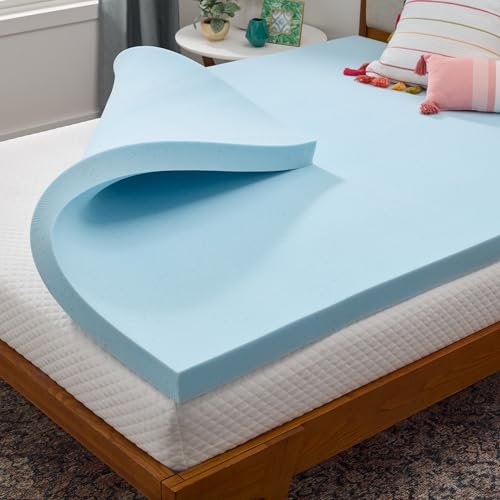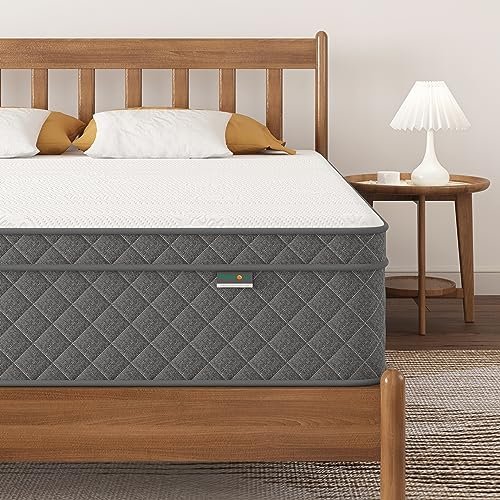
Unlocking Comfort: What Bed Frames Work with Adjustable Bases?
Adjustable bases have revolutionized the way we sleep, offering personalized comfort, pressure relief, and even solutions for snoring. But as you dream of elevating your head to read or your feet after a long day, a common question arises: “Will my current bed frame work with an adjustable base?”
It’s a fantastic question, and you’re not alone in asking it! While adjustable bases are designed for flexibility in comfort, their integration with traditional bed frames requires a little understanding. The good news? Many bed frames can work seamlessly with an adjustable base, turning your bedroom into a true sanctuary. This detailed guide will walk you through everything you need to know, ensuring you make an informed decision for a perfectly matched sleep setup.
The Magic of Adjustable Bases: A Quick Recap
Before diving into frames, let’s quickly refresh why adjustable bases are so popular. These innovative foundations allow you to elevate your head and/or feet independently, providing a range of benefits:
- Customized Comfort: Find your perfect position for sleeping, reading, watching TV, or working.
- Health Benefits: Alleviate acid reflux, reduce snoring, improve circulation, and relieve back pain.
- Accessibility: Easier entry and exit from bed for those with mobility challenges.
Now, let’s explore how to integrate this modern marvel with your chosen bed frame.
Why Compatibility Matters: The Core Challenge
The main reason you can’t just drop an adjustable base into any bed frame is due to movement and support. Traditional bed frames are typically designed to hold a static mattress and box spring or to support slats. An adjustable base, however, moves and requires space for its mechanical components, while also acting as the primary support for your mattress.
Key considerations include:
* Size: Does the adjustable base fit inside the bed frame?
* Clearance: Is there enough space for the base to elevate and lower without hitting the frame?
* Support: Can the bed frame accommodate the weight and structure of the adjustable base (which usually has its own legs)?
* Aesthetics: Do you want the bed frame to be purely decorative, or is it meant to enclose the base fully?
Types of Bed Frames That Typically Work with Adjustable Bases
Many common bed frame styles can be adapted to work with an adjustable base. The key is understanding their internal structure and how they support the mattress.
1. Platform Bed Frames (Often the Easiest Fit!)
Platform bed frames are frequently the best candidates for adjustable bases.
* What to Look For: These frames usually feature a robust perimeter with strong side rails and a solid footboard and headboard. Crucially, they often have an open interior space once any existing slats or central support beams are removed.
* Why They Work: The adjustable base can simply sit inside the platform frame’s perimeter, with its own legs providing the primary support for the mattress. The platform frame then acts as a decorative surround.
* Things to Check:
* Internal Dimensions: Measure the inside length and width to ensure your adjustable base will fit comfortably without being too snug or having too much gap.
* Slat Removal: You’ll almost certainly need to remove any existing slats or a solid platform from your platform frame to make room for the adjustable base.
* Side Rail Height: Ensure the side rails are tall enough to enclose the adjustable base when it’s in its lowest position, or that you’re comfortable with the base sitting slightly above them.
2. Traditional Bed Frames (Sleigh, Panel, Four-Poster, etc.)
Many classic bed frames, including those with headboards, footboards, and side rails, can also work.
* What to Look For: Similar to platform frames, you’ll want a frame with sturdy side rails and a design that allows for the removal of existing internal support.
* Why They Work: The principle is the same: the adjustable base’s legs support the base itself and the mattress, while the bed frame acts as a decorative enclosure.
* Things to Check:
* Open Interior: The most critical factor is the ability to remove all internal support (slats, center rails, box spring foundations) to create a clear cavity for the adjustable base.
* Headboard/Footboard Attachment: Many adjustable bases come with optional brackets to attach to existing headboards and footboards. This is a great feature if you want to maintain the look of your traditional bed. Check if your base offers this and if your frame’s headboard/footboard can accommodate the brackets.
* Clearance: Ensure the frame’s side rails are high enough to contain the adjustable base, or that the base’s legs are adjustable to the right height.
3. Bed Frames Designed for Adjustable Bases
Some bed frames are specifically manufactured with adjustable bases in mind.
* What to Look For: These frames will often boast an extra-wide or tall perimeter and minimal internal obstructions. They might explicitly state “adjustable base compatible” in their description.
* Why They Work: They are built from the ground up to provide the perfect housing, often with generous internal dimensions and easy headboard/footboard attachment points.
* Things to Check: These are usually the easiest, but still double-check the specified dimensions to match your chosen adjustable base.
Special Mention: Zero Clearance Adjustable Bases
If your bed frame has very shallow side rails or you want the mattress to sit flush with the frame, consider a “zero clearance” adjustable base. These bases are designed to sit directly on a solid platform (like a platform bed with its slats left in) without requiring their own legs or much vertical space. This can open up more frame options, but it means the base needs a strong, flat surface to rest on.
Types of Bed Frames That Generally DON’T Work (or are Difficult)
While many frames are adaptable, some are simply not suitable for adjustable bases:
- Bunk Beds: For obvious safety reasons, never use an adjustable base in a bunk bed. The moving parts and weight are not compatible with the design.
- Waterbed Frames: Waterbed frames are designed for a specific type of bladder support and are generally not compatible with the structure and movement of an adjustable base.
- Floating Bed Frames: These often rely on a very specific central support structure that an adjustable base would interfere with. They’re typically designed for a flat, static mattress foundation.
- Frames with Built-in Drawers/Storage that Occupy the Entire Under-Bed Space: If the under-bed storage completely fills the frame’s interior, there won’t be room for the adjustable base. Some frames have drawers that only go partway under, which might work, but it’s crucial to measure.
Step-by-Step Guide: Making Your Bed Frame Work with an Adjustable Base
Ready to combine the best of both worlds? Follow these steps to ensure a smooth setup:
Step 1: Measure, Measure, Measure!
This is the most crucial step to avoid disappointment.
* Measure your adjustable base: Get its exact length, width, and height (from the floor to the top of the base when fully lowered, including its legs).
* Measure your bed frame’s interior: Use a tape measure to get the inside length and width of your bed frame, from inner rail to inner rail. Also, measure the height of the side rails from the floor.
* Compare: Your adjustable base should fit snugly but not tightly within the frame’s interior dimensions. You want about 0.5 to 1 inch of clearance on each side and at the head/foot for easy placement and movement.
Step 2: Assess Your Current Bed Frame’s Internal Structure
- Identify support elements: Does your frame have wooden slats, metal crossbars, a solid platform, or a box spring foundation?
- Determine removability: Almost always, you will need to remove these internal support elements. The adjustable base will provide its own support with its legs. Ensure these can be easily detached without compromising the structural integrity of your decorative frame.
Step 3: Remove Existing Support Elements
- Once you’ve confirmed they can be removed, carefully take out all slats, crossbars, or any other internal foundation from your bed frame.
- Store them safely in case you ever want to revert to a traditional setup. Your goal is to create a completely open, empty space within the bed frame’s perimeter.
Step 4: Assemble and Position the Adjustable Base
- Follow the manufacturer’s instructions to assemble your adjustable base, including attaching its legs.
- Carefully slide the assembled adjustable base into the empty cavity of your bed frame. Center it so that it’s evenly spaced within the frame.
Step 5: Attach Headboard/Footboard (Optional)
- If your adjustable base came with headboard/footboard attachment brackets, now is the time to secure them to your bed frame’s headboard and footboard. This connects your frame to the base, preventing any shifting and maintaining a cohesive look.
- Not all bases come with brackets, and not all frames need them. If your frame is sturdy enough to stand alone and you’re not concerned about slight movement, this step may be optional.
Step 6: Test the Movement
- Place your adjustable-friendly mattress (most modern mattresses like memory foam, latex, and many innerspring are compatible) onto the base.
- Before making the bed, test the full range of motion of the adjustable base. Elevate the head and foot completely, then lower them.
- Watch for any rubbing or interference with the bed frame, especially the side rails or footboard. If there’s rubbing, you might need to slightly adjust the base’s position or re-evaluate the frame’s compatibility.
Important Tips for Success
- Always Consult Manufacturer Specifications: This cannot be stressed enough! Check the specific requirements and dimensions for both your adjustable base and your bed frame. Many adjustable base manufacturers list compatible frame types, and some even offer diagrams.
- Prioritize Stability: Your bed frame should be robust enough to hold its own structure, even without internal support. A flimsy frame won’t look good or last long.
- Consider Aesthetics vs. Functionality: Decide if you want the adjustable base to be completely hidden, or if you’re okay with it being partially visible.
- Don’t Force It: If the adjustable base doesn’t fit easily into the frame, do not try to force it. This could damage both your base and your frame. Re-measure or consider a different frame.
- Think About the Mattress: Remember, not all mattresses are suitable for adjustable bases. Ensure your mattress is flexible enough to bend and conform without damage (memory foam, latex, and hybrid mattresses are generally ideal).
- Seek Professional Help: If you’re unsure or encounter difficulties, don’t hesitate to contact the adjustable base manufacturer’s customer service or consult with a furniture expert.
Common Mistakes to Avoid
- Assuming All Frames are Compatible: This is the biggest pitfall. Always verify compatibility before purchasing an adjustable base or a new frame.
- Ignoring Measurements: Skimping on measuring is a recipe for frustration. Precise measurements are non-negotiable.
- Overlooking Weight Capacity: While the adjustable base supports the mattress, the bed frame itself needs to be sturdy. Also, ensure your adjustable base can support your mattress, your body weight, and any accessories.
- Forcing a Base into a Too-Small Frame: This can lead to damage, limited movement, or even prevent the base from functioning correctly.
- Removing Structural Supports the Frame Still Needs: While you remove slats, ensure you’re not removing elements that are critical to the overall stability of the decorative frame itself (e.g., if side rails depend on crossbars for lateral stability).
- Not Testing Full Range of Motion: A quick fit might seem fine, but if the base bumps against the frame when fully elevated, you’ll have ongoing issues.
Conclusion
Combining the aesthetic appeal of a beautiful bed frame with the innovative comfort of an adjustable base is entirely achievable! By understanding the nuances of compatibility, taking careful measurements, and following a few key steps, you can create a sleep sanctuary that perfectly blends style and personalized comfort.
Investing a little time in research and preparation will ensure a seamless setup, allowing you to enjoy all the incredible benefits of your adjustable bed without compromise. Sweet dreams await!
Frequently Asked Questions(FAQ)
Q. Can any bed frame be used with an adjustable base?
A. Not all bed frames are compatible, but many are with the right considerations. The key is ensuring the adjustable base can sit properly within the frame and has sufficient clearance to move freely without obstruction.
Q. What types of bed frames are generally compatible with adjustable bases?
A. Most standard bed frames, including those designed for traditional box springs, can work. Frames with side rails and an open interior are ideal, as the adjustable base usually sits inside the frame, either on its own legs or directly on the floor.
Q. Do I need to remove the slats from my existing bed frame if I’m adding an adjustable base?
A. Yes, in most cases, you will need to remove the existing slats, center support, and any cross members. The adjustable base functions as its own support system, and it typically sits directly on the floor inside the frame or rests on the frame’s side rails.
Q. What are the key considerations when checking if my current bed frame will work with an adjustable base?
A. Key considerations include the internal dimensions of your frame (it must be slightly larger than the base), the height and strength of the side rails (to contain the base), and sufficient space beneath the frame for the adjustable base’s components and movement, especially if it has legs.
Q. Can an adjustable base be used with a platform bed frame?
A. Often yes, especially if the platform bed frame has an open interior or if its solid platform can be removed. Some adjustable bases are specifically designed as “zero-clearance” models, meaning they can sit directly on top of a platform bed’s surface without needing legs, making them highly versatile for these frames.
Q. What is a “zero-clearance” adjustable base and why is it relevant for bed frames?
A. A “zero-clearance” adjustable base is designed to sit directly on a solid surface, like a platform bed frame, or within a frame without needing its own legs. This design offers greater flexibility, allowing it to be used with a wider range of bed frames, particularly those where a traditional adjustable base with legs wouldn’t fit.
Q. Are there any bed frame styles that are typically not compatible with adjustable bases?
A. Frames with built-in storage drawers that might obstruct the adjustable base’s movement or legs, frames with very shallow side rails that cannot contain the base, or certain antique frames with unique structural designs may not be compatible. Frames where the mattress is deeply recessed or fully enclosed might also pose challenges.
Q. Do I need special brackets to connect my headboard and footboard to an adjustable base?
A. Yes, if you wish to attach your existing headboard and/or footboard, most adjustable bases require or offer optional headboard/footboard brackets. These brackets attach to the adjustable base’s frame, providing secure points to bolt your headboard and footboard in place.
Q. How do I ensure my adjustable base doesn’t slide around inside the bed frame?
A. Many adjustable bases come with non-slip surfaces or retainers to keep the mattress in place. When placed inside a bed frame, the side rails of the frame typically help keep the adjustable base from shifting. If a base is particularly lightweight or the frame is very wide, additional measures like rubber feet or anti-slip pads can be used.
Related Articles
7 Top Full Size Bed Frames: What is the Dimensions of a Full Size Bed Frame and More!
Getting a good night’s sleep often starts with the right bed, and for many, a full-size bed is the perfect sweet spot between a twin and a queen…
How Much Is a King Size Sleep Number Smart Bed
How Much Is a King Size Sleep Number Smart Bed? Your Guide to Understanding the Investment Recommended Product: Select Comfort Air Bed Chamber for Sle…
How Much Does a Sleep Number 360 Smart Bed Cost
How Much Does a Sleep Number 360 Smart Bed Cost? Recommended Product: Sven & Son Classic Adjustable Bed Base — head and foot lift, massage, under-…



